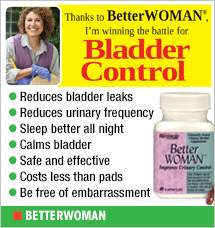Dollar Sense
Consider This Lower Cost Way to Pay Big Expenses: A Home Equity Line of Credit

For the last few years, Americans have been nervous about tapping their mortgages for cash. Many who borrowed heavily against their equity when home values were high, ended up underwater when values sank.
Lately, says CBS News, people are starting to take another look at home equity lines of credit (HELOCs) when they have unusual cash needs. HELOCs can be a good alternative when large, unusual expenses pop up, like the need for a new roof, or a big dental bill that Medicare won't touch. Just don't make the mistake that many made – of using their homes like ATMs whenever they wanted cash.
Here's What You Need to Know about HELOCs.
HELOCs are also called second mortgages, but that name is a little more scary. It's a loan, smaller than your first mortgage, which is secured by your house. That adds an element of risk. HELOCs come with variable interest rates, so if rates rise, your payments will rise. It is possible to get a cap possibly a lifetime cap or a periodic cap on the rate so it is important to ask.
How Much Can You Borrow?
The maximum amount you can borrow is determined by a formula. The home's value times 85%, minus the mortgage outstanding. On a home valued at $300,000 with a mortgage of $175,000 here is how the numbers work out:
$300,000 x 85% = $255,000
$255,000-$175,000 = $80,000 maximum line of credit, but this is also subject to other factors discussed below.
A nice feature of a HELOC is that you are not obligated to take the full amount, and no interest accrues until you spend some of it. Suppose you do end up with a $10,000 dental bill. You tap the HELOC for that amount, and leave the rest until and unless it is needed.
A HELOC is a revolving credit line. In other words, like a credit card, your available balance goes down as you borrow, and fills up again as you pay it back. Interest begins to accrue only as you borrow. Also similar to credit cards, your approval and the rate you get depend on your credit score, existing debts, and borrowing history.
To qualify, you'll need good credit, a sufficient income stream to make the maximum payments the line of credit could include, as well as your regular monthly bills, and of course, have sufficient equity in your home.
Some industry experts say, if you are considering a HELOC, the best time to apply for it is before you retire. Lenders look at your total debt compared to your total income, when deciding your loan fate. So borrowing while you are still working should result in a better quality HELOC.
The Upside of HELOCs
- A HELOC is flexible, since rather than taking a lump sum, you use it as you need it, or don't use it at all.
- The interest rate on a HELOC is likely to be much lower than a credit card or unsecured loan, since the loan is secured by your home.
- If you have debts, like credit cards with high interest rates, you can consolidate that debt by paying them off lower interest HELOC funds.
- The interest you pay on your HELOC is tax-deductible. Credit cards are not. If you file Schedule A on your tax return, this could be a boon.
- A HELOC is good for one-time or rare expenses, like the dental care mentioned, or a needed expensive home repair, like a new roof. Don't seek a HELOC if you need it to meet day to-day expenses. If that's your situation, you are already in financial hot water and a HELOC will only make it worse.
- HELOCs are best for the person who can anticipate that his or her income will not go down.
The Downside of HELOCs
- HELOCs should not be used to pay day-to-day expenses. If that is your goal, you will end up in a worse situation than you are already in, since you are unable to meet regular expenses. This type of loan is best for major, nonrecurring expenses.
- The fact that your home is collateral makes the interest rate lower, but it also adds risk that you can't pay for your home.
- HELOC rates are variable. If baseline rates go up or down, your interest rate and your payment will also fluctuate. That means you are vulnerable to rate spikes. If your income is tight and there is little or no flexibility, you could be in a bind.
- The bank could freeze your HELOC, if your house loses a great deal of value and the bank has reason to believe you can't repay the loan. That doesn't mean the bank will throw you out of your house over a HELOC. That generally happens when there is a foreclosure, not a default on a HELOC. It will more likely mean that you simply can't use the balance of the HELOC (for some people who can't handle credit, it could be an "upside.")
- Unlike credit cards, HELOCs do have upfront costs, similar to those you paid when you took out your first mortgage. The Federal Trade Commission said these costs likely include at least an application fee, a title search, an appraisal, attorney's fees and points. This can end up being a too-costly loan for someone who hopes to only use a couple thousand dollars of a HELOC. If that is your situation, you may be better off using a low interest credit card, or if your credit is bad, then try a secured card.
If you use a HELOC to pay off high interest credit card debt, you save interest. However, you are trading unsecured debt for secured debt. Keep in mind, unsecured debt can be discharged in bankruptcy if necessary. Secured debt, like a HELOC cannot generally be discharged in bankruptcy, so if you ended up in deep trouble, your house could be at risk.
Also, many people use a HELOC to wipe out high interest credit cards, then end up running up the cards again, making their financial situations much worse.
How to Get the Best Heloc Available
- Check with various lenders to find the best deal, including your own bank. Some banks offer deals to existing customers. Start there, get a quote, and then compare the quote to other lenders’ offers. You can probably log onto your bank's website to find out the HELOC rates.
- While you are looking, take note of "introductory offers." These offers will expire after a period of time, so find out the details.
- Check out an adjustable rate HELOC, which generally starts with the lowest rates. But beware, as economists anticipate there may be some sharp spikes in interest rates in coming years. Lenders are required to cap the maximum rate they can charge on a HELOC, but be sure you know what the cap is and whether you can afford the maximum payment.
You can learn more by logging onto the Consumer Finance Protection Bureau website and downloading a brochure about HELOCs.
www.consumerfinance.gov/f/201204_CFPB_HELOC-brochure.pdf
Teresa Ambord is a former accountant and Enrolled Agent with the IRS. Now she writes full time from her home, mostly for business, and about family when the inspiration strikes.



























































